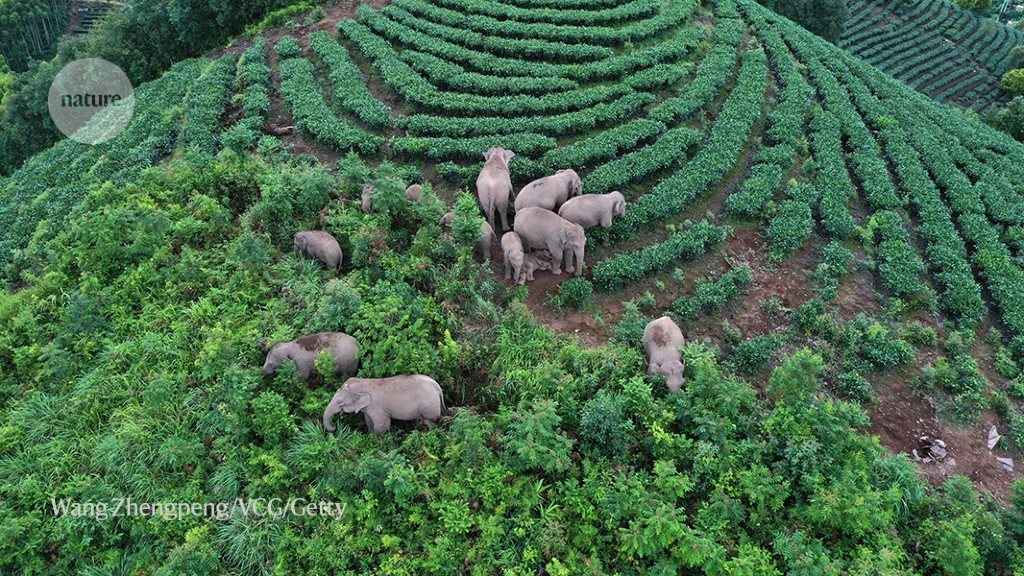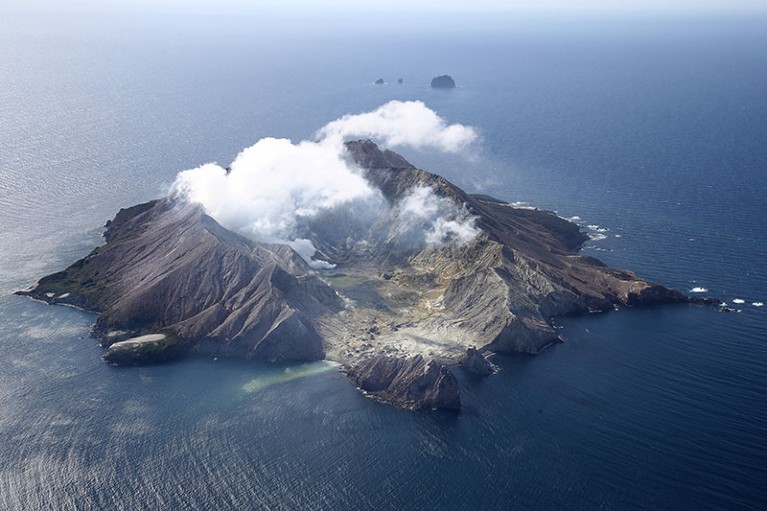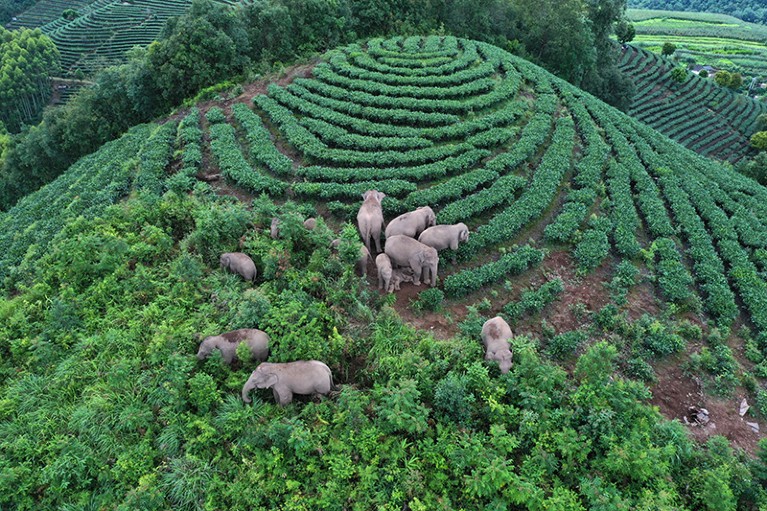A health-care worker in Chicago, Illinois, administers a COVID-19 vaccine aimed at the Omicron subvariant.Credit: Scott Olson/Getty
Omicron boosters protect against future variants
Booster shots against current SARS-CoV-2 variants can help to arm the human immune system against variants yet to arise. That’s the implication of two studies (W. B. Alsoussi et al. Preprint at bioRxiv https://doi.org/jhht (2022); C. I. Kaku et al. Preprint at bioRxiv https://doi.org/jhhv; 2022) that analysed how a booster shot or breakthrough infection affects antibody-producing cells. The work shows that some cells evolve to exclusively create antibodies targeting new strains, whereas others make antibodies against both new and old strains.
The findings have not been peer reviewed, but provide reassurance that vaccines targeting the Omicron variant will be effective. Their utility had been questioned because of evidence that the immune system has trouble pivoting between variants.
One study examined people who became infected with Omicron after receiving the original vaccine. One month after infection, nearly 97% of participants’ antibodies against the virus bound to the original strain better than to Omicron BA.1. But six months after infection, nearly half of their B cells produced antibodies that bound to Omicron BA.1 better than to the original strain — showing that the immune system continued to adapt long after the infection had passed.
White Island, also called Whakaari, is one of New Zealand’s most active volcanos.Credit: Phil Walter/Getty
Charge dropped in New Zealand volcano case
Volcanologists have applauded a judge’s decision to dismiss one of two criminal charges against New Zealand’s Earth-science research agency, GNS Science. The charges were laid in the wake of a fatal 2019 volcanic eruption on Whakaari White Island, a popular tourist destination, that killed 22 people and injured 25 others.
GNS Science issues volcanic-alert bulletins for the country’s active volcanoes, which are disseminated to the media, emergency-response agencies and the public through a service called GeoNet. The dismissed charge alleged that GNS Science should have coordinated with tour operators and other agencies and reviewed its volcanic-alert bulletins to ensure that they effectively communicated the implications of volcanic activity on the island.
With the charge dismissed, scientific organizations that provide information on public health and safety risks can now “breathe a bit of a sigh of relief”, says Simon Connell, a lawyer at the University of Otago in Dunedin, New Zealand.
GNS Science is also charged with having failed to ensure the health and safety of helicopter pilots whom it hired to take its employees to the island. This charge will go to trial. GNS Science has pleaded not guilty.
A herd of Asian elephants wandered out of their nature reserve in southwestern China last year.Credit: Wang Zhengpeng/VCG via Getty
Asian elephants mostly roam outside protected areas — and it’s a problem
Asian elephants spend most of their time outside protected areas because they prefer the food that they find there, an international team of scientists reports. But this behaviour is putting the animals and people in harm’s way, say researchers.
If protected areas do not contain animals’ preferred habitats, they will wander out, says Ahimsa Campos-Arceiz, who studies Asian elephants (Elephas maximus) at the Chinese Academy of Sciences’ Xishuangbanna Tropical Botanical Garden in Menglun, China.
Human–elephant conflict is the biggest threat for Asian elephants. Over the past few decades, animals in protected areas have increasingly wandered into villages. They often cause destruction, damaging crops and infrastructure and injuring and even killing people.
Campos-Arceiz and his colleagues set out to get a precise picture of Asian-elephant movements. They collared 102 individuals in Peninsular Malaysia and Borneo, recording 600,000 GPS locations over a decade. They found that elephants tend to spend most of their time in habitats outside the protected areas, at the forest edge and in areas of regrowth. The findings were published in the Journal of Applied Ecology (J. A. de la Torre et al. J. Appl. Ecol. https://doi.org/gq28qp; 2022) on 18 October.
The researchers suspect that the elephants venture out because they like to eat grasses, bamboo, palms and fast-growing trees, which are commonly found in disturbed forests and are relatively scarce under the canopy of old-growth forests.
Philip Nyhus, a conservation biologist who specializes in human–wildlife conflict at Colby College in Waterville, Maine, says that Asian elephants live deep in dense forest and so are much more difficult to study than African elephants, which roam open savannahs. “The sample size is impressive,” he says.
The research provides strong evidence for how to set up suitable protected areas that reduce the risk of elephants wandering out, he says.
The results do not diminish the importance of protected areas, which provide long-term safety for the animals, says Campos-Arceiz. “But they are clearly not enough.”









More News
I study artefacts left in prehistoric caves
How artificial intelligence is helping to identify global inequalities
Tackling ‘wicked’ problems calls for engineers with social responsibility